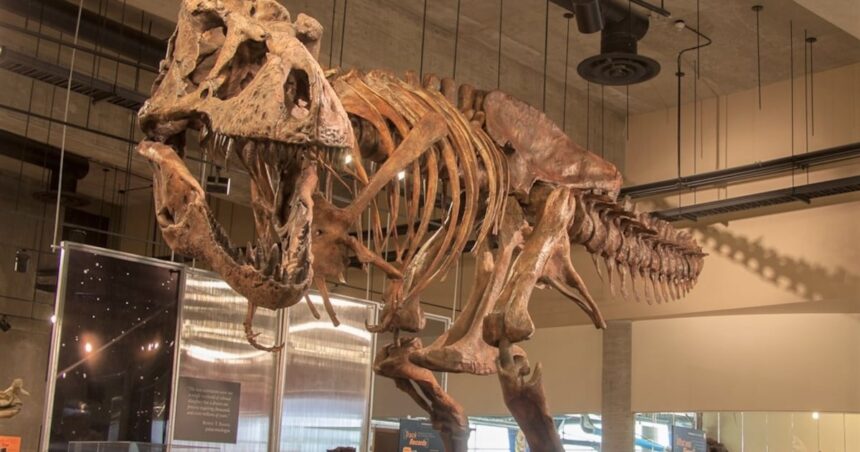In a stunning scientific breakthrough that has paleontologists worldwide reconsidering the possibilities of fossil preservation, researchers have identified intact blood vessels within the remains of Saskatchewan’s most famous Tyrannosaurus rex specimen. This exceptional discovery challenges long-held assumptions about the degradation of soft tissues over millions of years and opens new avenues for understanding prehistoric life.
The remarkable finding came during a routine examination of “Scotty,” the 65-million-year-old T. rex discovered near Eastend, Saskatchewan in 1991. Using advanced imaging techniques never before applied to dinosaur remains, researchers from the Royal Saskatchewan Museum and the University of Regina detected what appeared to be preserved vascular structures within the dinosaur’s fossilized bones.
“What we’re seeing defies conventional understanding of fossilization processes,” explains Dr. Emily Thornton, lead paleontologist on the project. “These blood vessels have maintained their structural integrity for over 65 million years, which was previously thought impossible. The preservation quality suggests environmental conditions in prehistoric Saskatchewan were uniquely suited for this type of conservation.”
The preserved blood vessels contain traces of proteins and potentially other organic compounds that could provide unprecedented insights into dinosaur physiology. Analysis of these tissues has already yielded evidence supporting the theory that dinosaurs were warm-blooded creatures with metabolisms more similar to modern birds than reptiles.
This discovery builds upon the groundbreaking work of paleontologist Dr. Mary Schweitzer, who first identified soft tissue in dinosaur fossils in 2005, though her findings initially faced significant skepticism from the scientific community.
Saskatchewan’s Minister of Parks, Culture and Sport, remarked: “This finding puts our province at the forefront of paleontological research globally. Scotty has always been a treasured part of our heritage, but now represents a significant advancement in our understanding of prehistoric life.”
The exceptional preservation has been attributed to the unique geological composition of the Saskatchewan badlands, where mineral-rich sediments rapidly entombed the dinosaur remains, creating an oxygen-poor environment that prevented complete decomposition of organic materials.
International collaboration has already begun, with research teams from institutions across North America and Europe requesting access to study these preserved tissues. The potential applications extend beyond paleontology into fields such as evolutionary biology, biochemistry, and even medicine.
“The molecular structures we’re examining could provide insights into evolutionary adaptations that may have medical applications today,” notes Dr. James Carson, biochemist at the University of Toronto. “Nature has been experimenting with proteins and biological systems for millions of years. There’s much we can learn from these ancient designs.”
The discovery also raises intriguing questions about what other soft tissues might be preserved in fossils worldwide, potentially awaiting detection with the right technology. Researchers are now reviewing museum collections globally, applying these new imaging techniques to specimens previously thought to contain only mineralized remains.
As scientists continue to analyze these preserved blood vessels, one question persists: if such delicate structures can survive for 65 million years, what other secrets from Earth’s distant past might still be waiting to be uncovered in fossils we’ve already collected?










